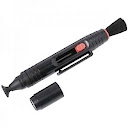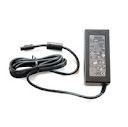Getting The Right Digital Camera For You
9:55 PM | Posted by
Unknown |
Edit Post
With digital cameras for many in the market these days, choosing the right to buy may seem a daunting task. Chris Thomas offers a simple guide to buying the camera will help you know what type of device will be good for you and your budget
The benefits are very large in digital photography:
You can take till you drop
Take digital images of the camera has no impact on other image was captured. You can then review each image on the small screen on the back of the camera. You can take all the photos of the same scene you like - store them in memory - delete the ones you do not like and print (s) that the image is a winner like.Each
Otherwise, you can put an image on a computer screen or by email to all your friends - can send black so easy?
Print at home or in the laboratory
You can print the image on the photo printer at home - Make your image in a card, calendar, or a whole series of other memorabilia photos. It provides working professionals.
So, what digital camera should I buy?
A question often asked is "What kind of camera should I buy? There are literally hundreds of different models available from many reputable manufacturers.
This is a difficult question that could respond in complex ways. Rather, we have tried to emphasize the key points and help you share decision.Key camera, which will affect your decision to purchase are:
What I want to use the camera for? What is the size of an image can be printed? Does the camera zoom? What is the size and weight is the camera?
What is the size of an image can I print?
If your goal is to take a camera on vacation, take it to the beach and up a mountain and print images of your memorable time on 6 x 4 inch prints, then do not spend much money on your camera. A small compact camera with an image resolution of 2 or 3 megapixels will suffice for your needs, and if you drop the camera or get sand in his work, then you'll be glad you did not spend too money.
Serious photographers want to make a bigger pints or selectively to enlarge. They want better image resolution and the benefit of a zoom lens.
So - what this thing megapixels? Well, the image size - quality - made from the camera. The higher the number - and a better quality prints that can be made larger.
The camera has zoom?
In the past, was considered the second best zoom lenses, because of their distortion and fogging. This is no longer true - zoom lenses are really great. 3 x optical zoom is common, and 6 x zoom feature more expensive cameras. So you can be a lens, which covers both wide-angle view and a medium telephoto lens. All encased in a light camera very useful.
Beware of digital zoom. This is a technique that zooms in on a portion of the image by treating the image and interpolating the image between the pixels - a technique that always gives worse results.
What are the dimensions and weight of the camera?
Digital cameras do not have to be big and heavy. In fact, there are models available for a very small, which can fit in a handbag. However, more sophisticated devices tend to be bigger - and heavier. Professional models with interchangeable lenses and external flash guns require their own absolute right.
Make the right choice
There is a wide range of digital cameras on the market. However, manufacturers focus on their customers and the target-specific market sectors. The following table summarizes the information we have discussed.
Basic unit
A fixed lens camera for less than 50 [or $ 90 US] that takes digital images of up to 1 megapixel - will be adapted to the computer or TV screen.
Chamber Group
A compact camera with a fixed lens - cost up to 150 [or 280 USD] - taking images up to 2 megapixels - will generate good quality images suitable for printing up to 4 x 5 inches
Best Camera
Another compact design but with a zoom lens 2 to 1 and costs between 200 and 400 [$ 350 - $ 800] for the shooting or between 3 and 5 megapixel camera that is suitable for printing up 10 x 8 inches
Camera serious
SLR-style camera zoom, 5-1 to pay between 600 and 1000 [$ 1000 - $ 2000 USD], producing images with up to 6 megapixel camera that produces prints up to 12 x 16 inches
Professional camera
An SLR camera with interchangeable lenses and costing up to 1,500 pounds [about $ 3000 USD], which will take 8-megapixel images, which can print to poster size.
SLR stands for Single Lens Reflex. These cameras have a viewfinder that does not separate. Rather, the operator looks through the lens of the camera. Just before the shutter is opened a mirror and flicks the light passing through the lens, not to strike the sensitive surface of the camera. In many cases, the front of the camera lens can be replaced another. A variation on this presents the image as seen by the camera's LCD screen, and a digital camera on the back or in the viewfinder.
Flash. Many low cost cameras on board flash - remember that only work up to 10 feet and can produce red eye. More expensive cameras that the user is expected to use a separate external flash.
Camera Accessories
Most digital cameras come with interface cables and PC software. So if you have a PC at home or at work, you can "download" images from camera to computer, do basic editing such as removing red eye and remove images you do not want to save your precious photos future generations of a CD ROM or other storage medium.
Digital Media Memory
Sometimes known as Smart Card, Compact Flash, Multi Media Card, Memory Stick. These are the memory chips on which images are stored - some refer to them as digital cinema. Besides the ability of the media, can store more images. So buy more, then you need - for now. Images can be removed by the media - but keep them in a CD-ROM or DVD before removing the card.
Last tip - Keep lots of batteries on hand. The power-hungry digital cameras
Pictures/SnapShot :





The benefits are very large in digital photography:
You can take till you drop
Take digital images of the camera has no impact on other image was captured. You can then review each image on the small screen on the back of the camera. You can take all the photos of the same scene you like - store them in memory - delete the ones you do not like and print (s) that the image is a winner like.Each
Otherwise, you can put an image on a computer screen or by email to all your friends - can send black so easy?
Print at home or in the laboratory
You can print the image on the photo printer at home - Make your image in a card, calendar, or a whole series of other memorabilia photos. It provides working professionals.
So, what digital camera should I buy?
A question often asked is "What kind of camera should I buy? There are literally hundreds of different models available from many reputable manufacturers.
This is a difficult question that could respond in complex ways. Rather, we have tried to emphasize the key points and help you share decision.Key camera, which will affect your decision to purchase are:
What I want to use the camera for? What is the size of an image can be printed? Does the camera zoom? What is the size and weight is the camera?
What is the size of an image can I print?
If your goal is to take a camera on vacation, take it to the beach and up a mountain and print images of your memorable time on 6 x 4 inch prints, then do not spend much money on your camera. A small compact camera with an image resolution of 2 or 3 megapixels will suffice for your needs, and if you drop the camera or get sand in his work, then you'll be glad you did not spend too money.
Serious photographers want to make a bigger pints or selectively to enlarge. They want better image resolution and the benefit of a zoom lens.
So - what this thing megapixels? Well, the image size - quality - made from the camera. The higher the number - and a better quality prints that can be made larger.
The camera has zoom?
In the past, was considered the second best zoom lenses, because of their distortion and fogging. This is no longer true - zoom lenses are really great. 3 x optical zoom is common, and 6 x zoom feature more expensive cameras. So you can be a lens, which covers both wide-angle view and a medium telephoto lens. All encased in a light camera very useful.
Beware of digital zoom. This is a technique that zooms in on a portion of the image by treating the image and interpolating the image between the pixels - a technique that always gives worse results.
What are the dimensions and weight of the camera?
Digital cameras do not have to be big and heavy. In fact, there are models available for a very small, which can fit in a handbag. However, more sophisticated devices tend to be bigger - and heavier. Professional models with interchangeable lenses and external flash guns require their own absolute right.
Make the right choice
There is a wide range of digital cameras on the market. However, manufacturers focus on their customers and the target-specific market sectors. The following table summarizes the information we have discussed.
Basic unit
A fixed lens camera for less than 50 [or $ 90 US] that takes digital images of up to 1 megapixel - will be adapted to the computer or TV screen.
Chamber Group
A compact camera with a fixed lens - cost up to 150 [or 280 USD] - taking images up to 2 megapixels - will generate good quality images suitable for printing up to 4 x 5 inches
Best Camera
Another compact design but with a zoom lens 2 to 1 and costs between 200 and 400 [$ 350 - $ 800] for the shooting or between 3 and 5 megapixel camera that is suitable for printing up 10 x 8 inches
Camera serious
SLR-style camera zoom, 5-1 to pay between 600 and 1000 [$ 1000 - $ 2000 USD], producing images with up to 6 megapixel camera that produces prints up to 12 x 16 inches
Professional camera
An SLR camera with interchangeable lenses and costing up to 1,500 pounds [about $ 3000 USD], which will take 8-megapixel images, which can print to poster size.
SLR stands for Single Lens Reflex. These cameras have a viewfinder that does not separate. Rather, the operator looks through the lens of the camera. Just before the shutter is opened a mirror and flicks the light passing through the lens, not to strike the sensitive surface of the camera. In many cases, the front of the camera lens can be replaced another. A variation on this presents the image as seen by the camera's LCD screen, and a digital camera on the back or in the viewfinder.
Flash. Many low cost cameras on board flash - remember that only work up to 10 feet and can produce red eye. More expensive cameras that the user is expected to use a separate external flash.
Camera Accessories
Most digital cameras come with interface cables and PC software. So if you have a PC at home or at work, you can "download" images from camera to computer, do basic editing such as removing red eye and remove images you do not want to save your precious photos future generations of a CD ROM or other storage medium.
Digital Media Memory
Sometimes known as Smart Card, Compact Flash, Multi Media Card, Memory Stick. These are the memory chips on which images are stored - some refer to them as digital cinema. Besides the ability of the media, can store more images. So buy more, then you need - for now. Images can be removed by the media - but keep them in a CD-ROM or DVD before removing the card.
Last tip - Keep lots of batteries on hand. The power-hungry digital cameras
Pictures/SnapShot :






Labels:
camera
Related Articles from our archive : camera
Subscribe to:
Post Comments (Atom)
Best Deals
Amazon 25% to 50% off
Category
- camera (288)
- camera spy (7)
- canon (87)
- canon powershot (16)
- handycam (3)
- nikon (89)
- portrait (45)







0 comments:
Post a Comment